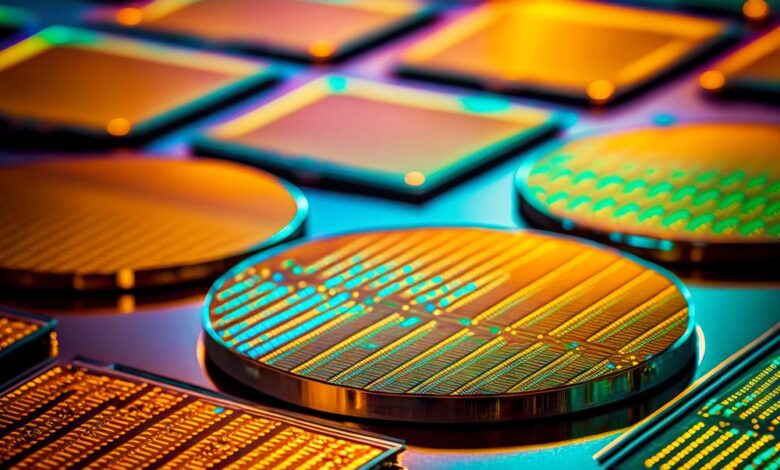AMD’s Strategic Position In The Semiconductor Industry

$AMD
Advanced Micro Devices (NASDAQ: AMD) continues to assert its position as a significant player in the semiconductor industry, maintaining its status as the world’s second-largest maker of x86 CPUs and discrete GPUs. This places AMD just behind industry leaders such as Intel (NASDAQ: INTC) and Nvidia (NASDAQ: NVDA) in these segments. The company’s strategic decision to outsource production to Taiwan Semiconductor Manufacturing has enabled it to offer denser, more cost-effective, and energy-efficient CPUs compared to Intel, alongside more affordable GPUs relative to Nvidia.
In the fiscal year 2023, AMD reported a diverse revenue stream, with 29% derived from its Epyc CPUs and Instinct GPUs targeted at data centers and 27% from gaming GPUs for PCs and custom APUs for consoles. Despite a 4% decline in annual revenue, influenced by reduced PC and gaming chip sales, the company’s engagement in the burgeoning AI market through data center and embedded chips presents a promising avenue for growth.
Notably, AMD’s adjusted gross margin experienced a slight contraction to 50%, with adjusted earnings decreasing by 24% due to the overall industry slowdown exacerbated by inflationary pressures on consumer spending. Looking ahead to 2024, market analysts project a 5% increase in AMD’s revenue and a 23% rise in adjusted earnings, driven by heightened demand in the AI-driven data center sector and stabilization within the PC and gaming markets. Further growth is anticipated in 2025, with expected revenue and earnings surges of 28% and 60%, respectively.
In contrast, Micron Technologies (NASDAQ: MU), another key player in the semiconductor sector, faced a challenging fiscal 2023 with a significant 49% drop in revenue. The company, which ranks as the world’s third-largest DRAM producer and fourth-largest NAND supplier, saw declines across its major markets due to dwindling PC shipments and the conclusion of the 5G smartphone upgrade cycle. However, the first nine months of fiscal 2024 marked a turnaround for Micron, with a 51% revenue increase as PC and smartphone markets stabilized and data centers enhanced their capabilities with upgraded SSDs and HBM chips for AI processing.
In the competitive landscape, AMD’s forward-looking earnings multiple stands at 48 times, reflecting market optimism particularly around its cost-effective Instinct GPUs for AI applications, despite its significant exposure to fluctuating PC and gaming console markets. In comparison, Micron’s forward earnings multiple is considerably lower at 16 times, suggesting a more attractive valuation given its clear cyclical recovery and growth prospects in the AI sector.
As the semiconductor industry continues to evolve, both AMD and Micron are poised to capitalize on the next growth cycle, driven by their strategic market positions and ongoing technological advancements. While AMD offers a robust growth narrative through its innovative product offerings and strategic market maneuvers, Micron’s valuation and cyclical recovery present a compelling case for its own set of strategic advantages in the competitive memory chip market.
DISCLAIMER: THIS CONTENT IS FOR INFORMATIONAL PURPOSES ONLY AND SHOULD NOT BE INTERPRETED AS INVESTMENT ADVICE. INVESTING INVOLVES RISK, INCLUDING THE POTENTIAL LOSS OF PRINCIPAL. READERS ARE ENCOURAGED TO CONDUCT THEIR OWN RESEARCH AND CONSULT WITH A QUALIFIED FINANCIAL ADVISOR BEFORE MAKING ANY INVESTMENT DECISIONS.



